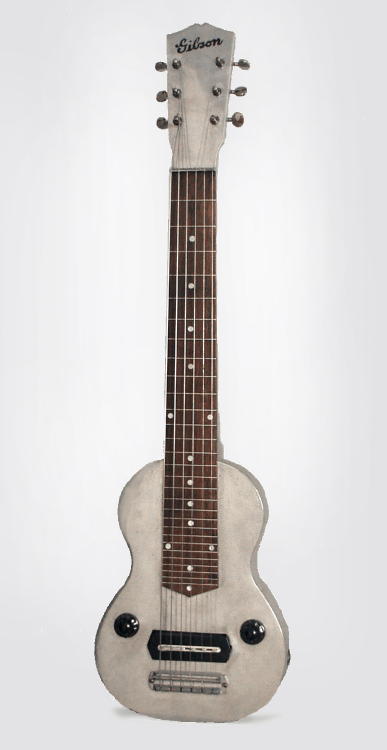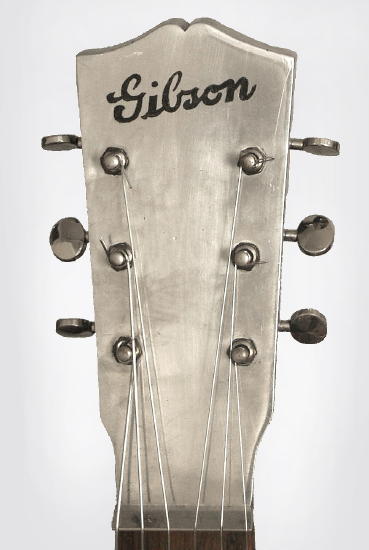1935 Gibson E-150
When FJ contributor and steel guitar maven Andy Volk alerted me to this E-150, his email consisted of one word, “Yowza!”, which, if anything, understates the coolness of this guitar. This is, of course, a beautiful example of Gibson’s first production electric guitar. This model was first produced in late 1935 and was made from aluminum, most likely in emulation of Rickenbacker’s Frying Pan, the very first production electric guitar. This model was originally dubbed the EHG, for Electric Hawaiian Guitar, before being rechristened the E-150, for its $150 price. Gibson quickly discovered, as Rickenbacker already had, that aluminum wasn’t a very good material for guitar bodies as it was susceptible to expanding and contracting with temperature changes. After making around 115 of them, Gibson discontinued them in favor of the wooden EH-150.
E-150s are absurdly rare because not only did Gibson make a tiny number of them, some of those that were made were most likely sacrificed to the aluminum scrap drives of World War II. I’ve never actually seen one in person but I wonder how it sounds? It has the first version of what was later called the Charlie Christian pickup, and those do sound great, and the aluminum body helps with sustain, so I’m guessing it sound really good. (Those Rickenbacker Frying Pans sure sound great.) This E-150/EHG is a wonderful opportunity for someone who wants to start a collection of Gibson electric guitars starting at the beginning. And it is a hugely historic guitar. Think about it. If it wasn’t for the E-150 proving that electric guitar could work for them, Gibson probably would never gone on to invent the Les Paul Standard, the ES-335, the Flying V or the Firebird. On the other hand, Gibson did invent the Corvus, but on balance I still think they did the right thing by moving into electric guitars in 1935. This E-150 is currently living at Retrofret, where it is rather coyly priced at “Inquire.”




